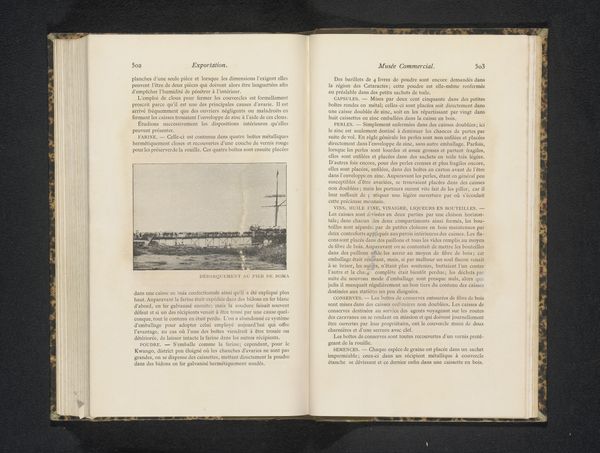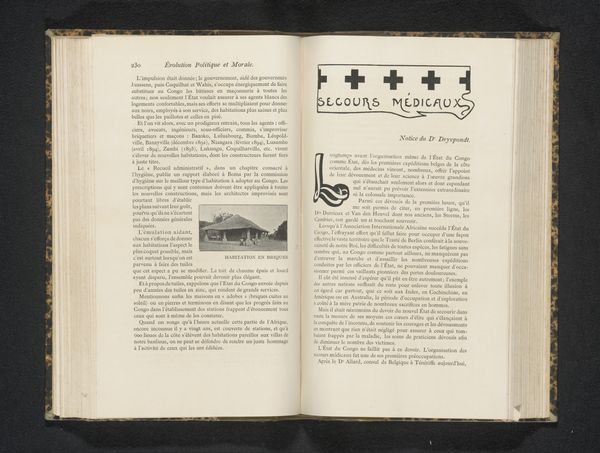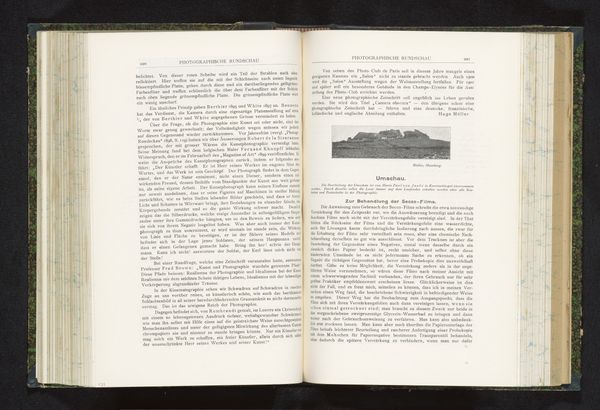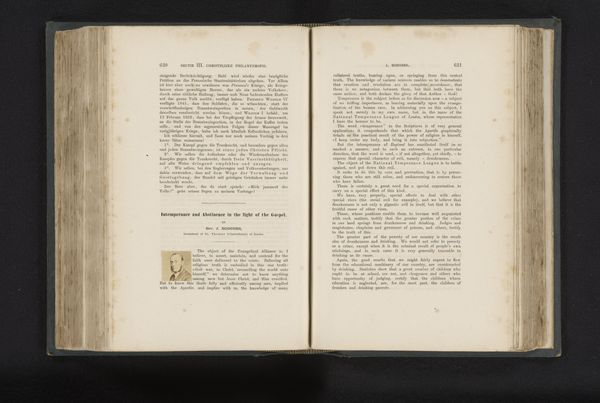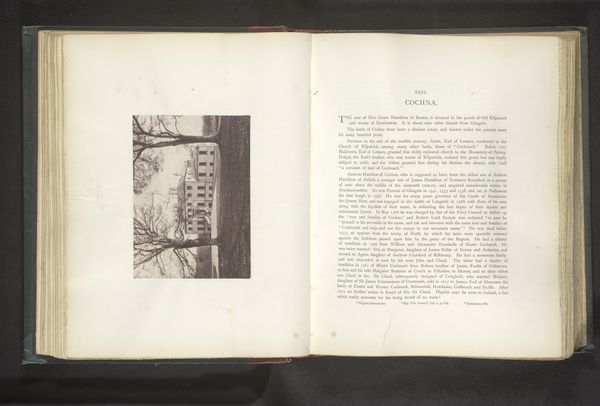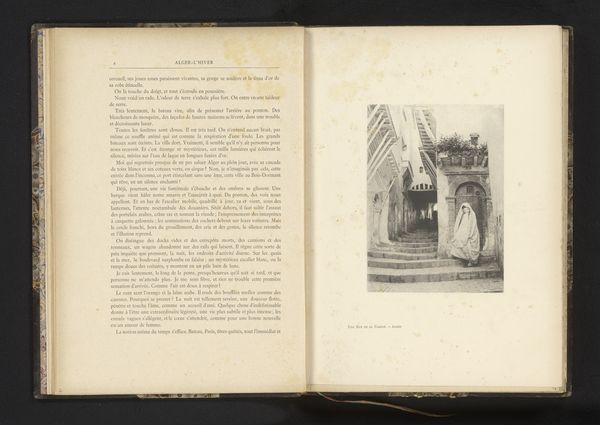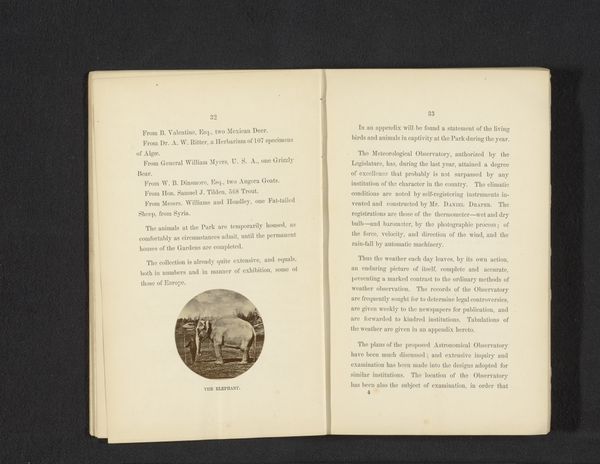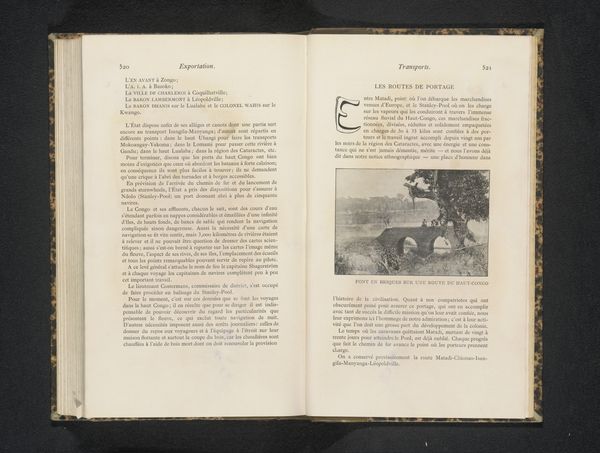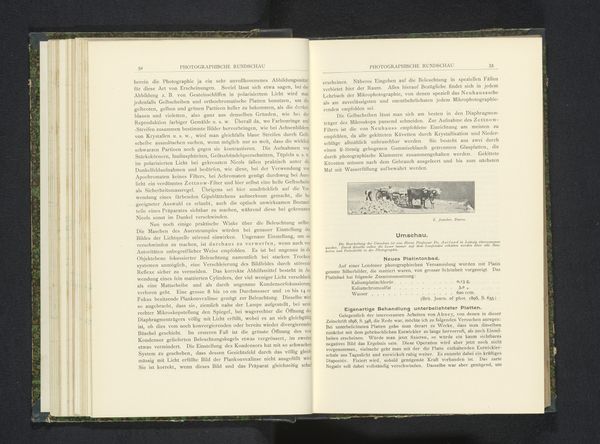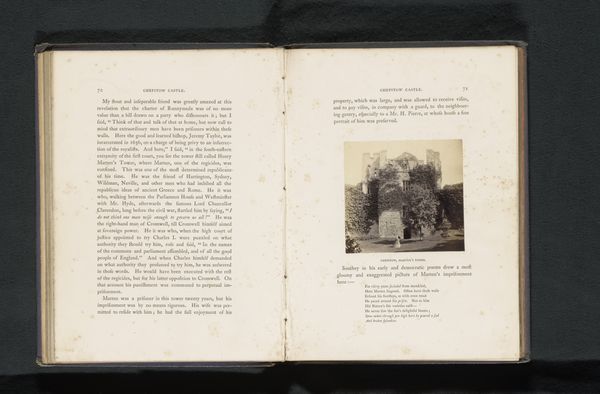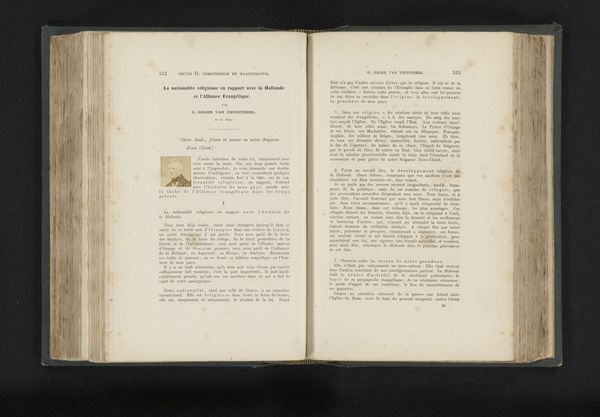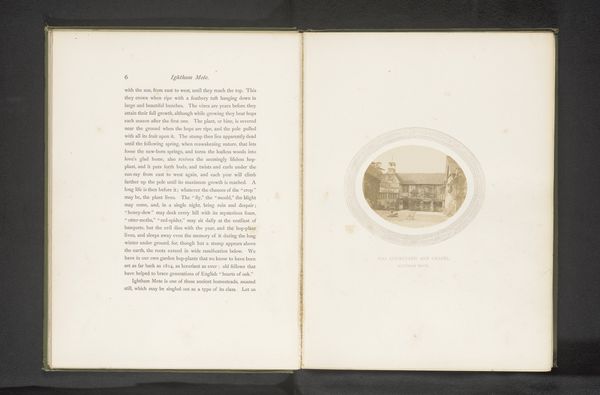
print, photography
#
portrait
# print
#
landscape
#
text
#
photography
#
history-painting
Dimensions: height 48 mm, width 63 mm
Copyright: Rijks Museum: Open Domain
Curator: Today we are looking at a fascinating image, "Gezicht op een huis in Congo," which translates to "View of a House in Congo." It is believed to predate 1892. The artist is anonymous and the work is a print from a photographic source within a published book. Editor: The light is rather interesting. The architecture shown has clearly been imported—it doesn't really fit the context and almost looks plunked down on the landscape like a toy. I'm immediately curious about its origins and what was used to make the paper. Curator: Right. So, placing this photograph in its socio-historical context, one is struck by its connection to colonial projects in the Congo during that period. It reflects on the history of religious missions and their role in shaping the cultural landscape through, among other methods, architecture. How do constructions of religion operate when faced with pre-existing local belief structures? Editor: Definitely, and from a materialist point of view, this photo within the printed page becomes a tool for broader social transformations and commercial aims. Paper manufacturing relied heavily on resource extraction from colonial territories, and this book becomes another manifestation of how cultural production facilitated economic ambitions. Consider the printing press as another labor site. Curator: Exactly. The image romanticizes missionary work, promoting an imperialist narrative of bringing civilization and faith. Thinking intersectionally, it reflects broader systems of oppression based on race, class, and religion and how their effects intertwine, as it neglects pre-existing social structures and customs. What social realities is it overlooking or choosing to misrepresent? Editor: And the book itself had an afterlife, it entered a larger network of objects through production, dissemination, consumption, and archiving processes. Each one speaks of both visible labor and erased supply chains. What kind of value system is on display that leads to this aesthetic representation of a home built in the Congo? Curator: It reminds us to remain mindful about decolonizing our institutional perspectives. We can work toward that goal by interrogating the relationship between the artwork’s subjects and materials and how they might contribute to creating more inclusive, culturally responsive exhibitions. Editor: Indeed. Looking closer helps to better understand production means, material components, and the labor processes used, it enriches how we connect artworks with global production networks, social relationships, and commercial contexts, creating better conditions for current artists.
Comments
No comments
Be the first to comment and join the conversation on the ultimate creative platform.
